Let’s revist the cross country move! I feel like we are unpacked and settled into our new home and I also feel that it didn’t take us very long to get to this point. Here is how I tackle moving in and getting organized!
Plan Furniture before
Do your best to plan where the furniture will go before it gets there. At least know what room it will go in. Moving day is an absolute whirlwind of activity of people asking you where to put things. If you know where the furniture is going, you’ll save a lot of headaches later. It is also helpful if you have a rough idea of where in the room you want it to be.
Decide on a clear name for each room also so when you have multiple moving crewmembers asking where something goes you can clearly direct them. “Yellow room” “family room” “green bedroom”.
Start with something easy
Once the furniture and boxes are there it can feel totally overwhelming. I always start with something easy. Especially if it takes up a lot of boxes. For me… bookshelves. Books are in a lot of boxes and I know exactly where they go… on a shelf! Get those done, you eliminate several boxes and you already feel accomplished. I consider books to be low hanging fruit, and I always find it best to begin a huge overwhelming project with low hanging fruit.
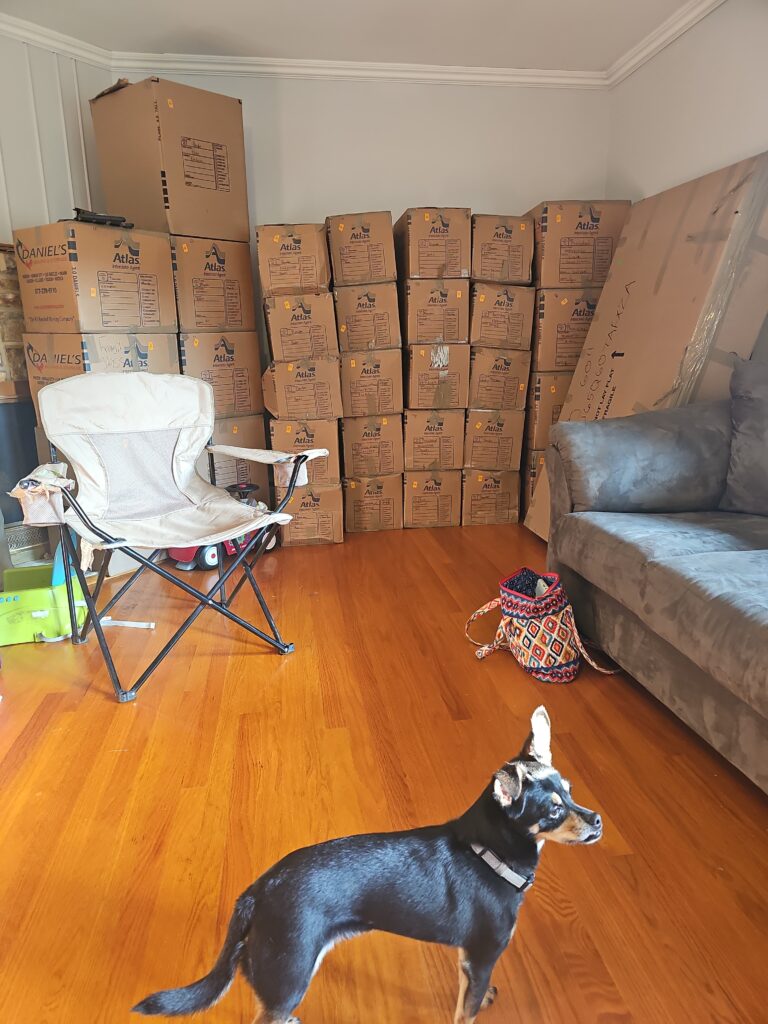
I don’t necessarily stick with one room. This can cause total burn out. But instead, I focus on boxes that are either in the way, or I know exactly where they go. For example, clothes. Clothes can go right back into the drawers they came from, or hung in the closet.
Putting away these items that I know exactly where to go can get rid of a LOT of boxes and make you feel accomplished. When you have more room to work its easier to focus on unpacking the harder things.
Map it out in your head
Okay it is time to tackle the kitchen. For rooms like this it is best to map it out in your head. Try to have a rough idea of where major things go like plates, bowls, glasses, etc. What worked in your old kitchen? Will it work in your new one?
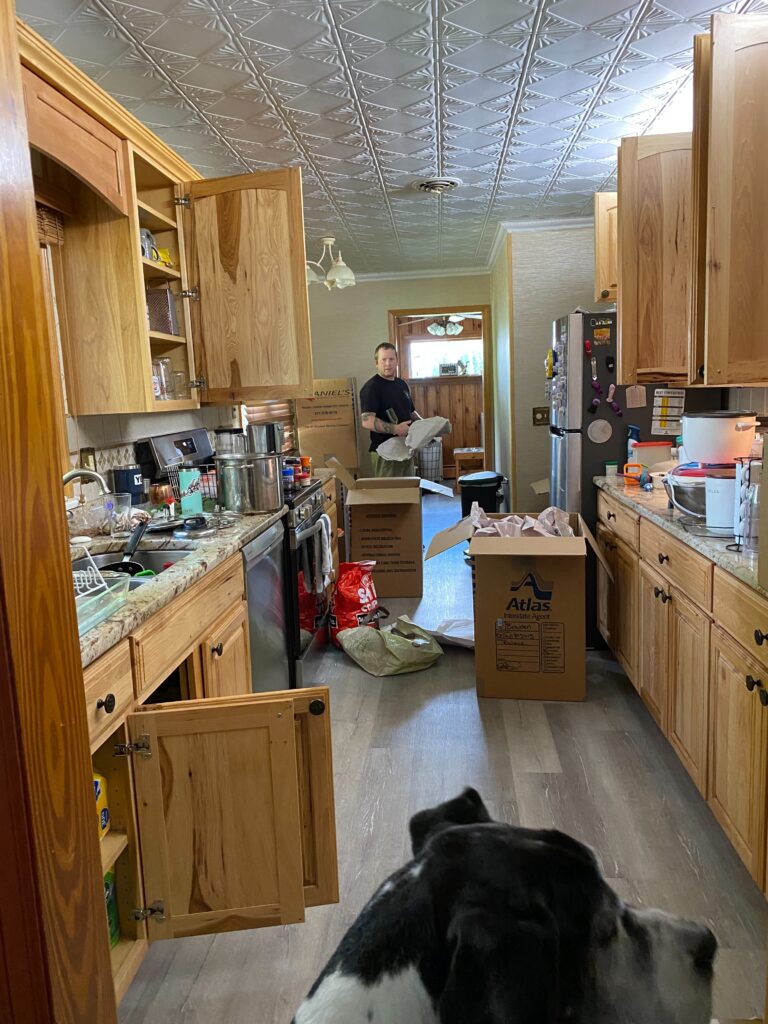
The kitchen is a LOT of boxes and can feel overwhelming but once you have a plan and you start going it gets easier and easier. It’s also a LOT of packing paper so it can be deceiving how much you actually have. The worst part about the kitchen is getting down to those things you don’t use as often. We have tools for making home made pasta that we only use every few months, and containers for cold brew that we haven’t made in a while.
Unpacking is always a good point to decide if you need something still or not. It’s totally okay to just keep it though. We saved a cabinet for extra things that we didn’t really know where to put. Overtime it becomes obvious that some things need to shift and go other places.
Organize now? Or Later?
I tend to want to organize as I am unpacking but this also takes twice as long. As good as my intentions are, I end up just getting everything out of the boxes and into the right location and slapping the organizing on my to do list for later.
This seemed to work well. I got all my books on the shelves and came back another day and arranged them in a more pleasing way. The kids’ arts and craft supplies got totally unboxed and weeks later I sat there and organized it all to be much more functional. Same with toys, closets, bathroom supplies.
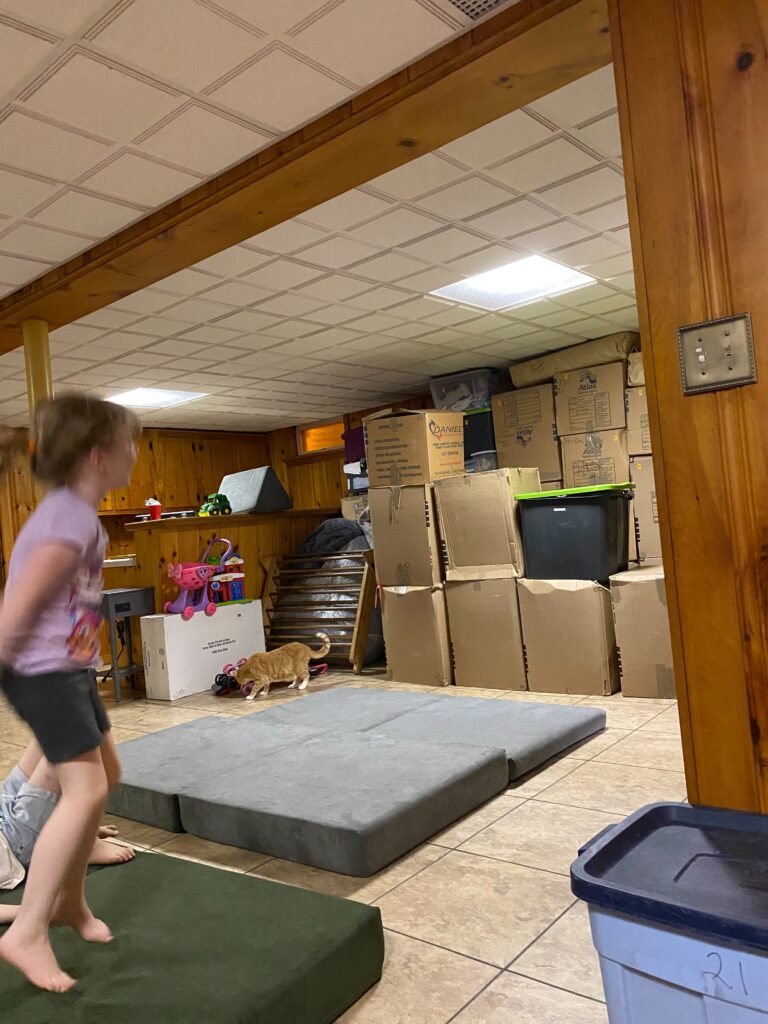
Honestly, it is challenging to work around the boxes. So, I feel like typically it is better to unpack, get the boxes out of there, maybe even live with it a little bit, and then re-organize. This way you know exactly what supplies you need (baskets, containers etc.) and also you know what really truly isn’t working at all.
I essentially had the entire house unpacked in 3 or 4 days but had to go back over the next few weeks to organize. But at least without all the boxes I felt like I was functional.
The parts box
If you use a moving company they always make a parts box. This is where pieces of things go. Screws, remotes, really it becomes a catch all for everything you find when they move your furniture out. These are a nightmare to unpack.
Why is it so hard? Do you have an exact plan where every cord will go? Often these boxes become a hodgepodge of things. HDMI cable, baby gate parts, pieces of toys, a container from your pantry, a notebook with two pages written, a token from a board game, and a piece of plastic that you have NO idea what it goes to but you don’t want to throw out because you haven’t finished unpacking yet.
These boxes will sit out for WEEKS taunting you. I like to tackle these boxes last. They continue to become my catch all. If I empty another box and there is an item or two that I don’t know what to do… I throw it in the parts box.
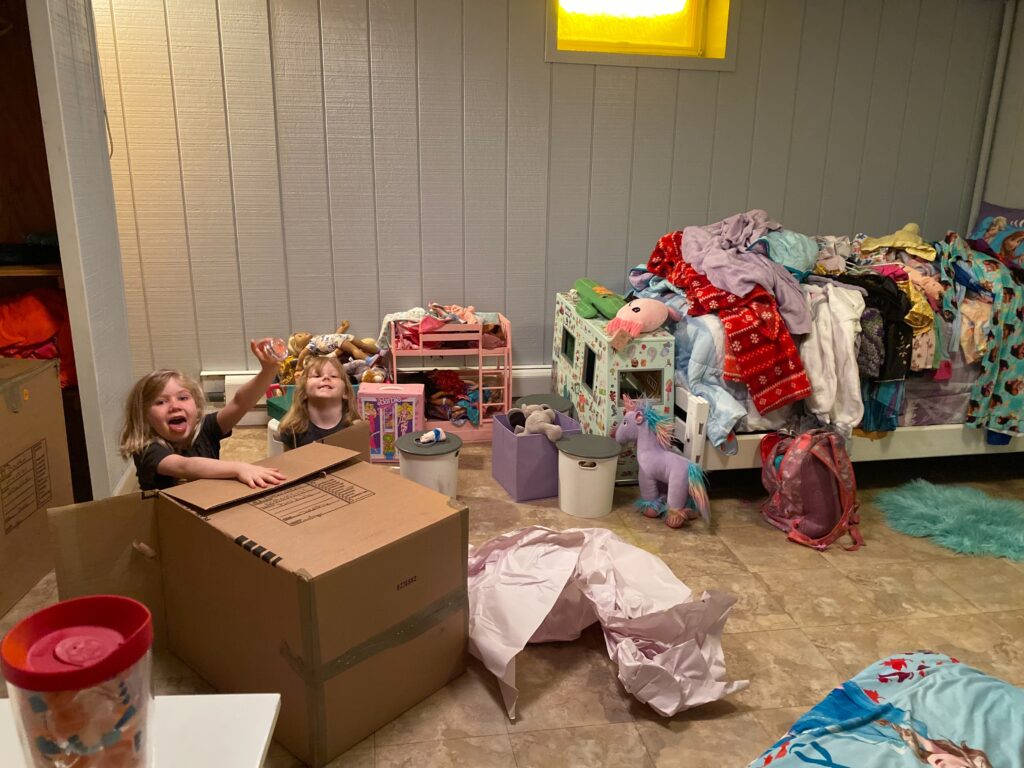
When I have exhausted all other options- I tackle the parts box. For this, I’ll tell myself “Just do ten items a day” and then I’ll sift through the box and find 10 things that I know where they go. Over the course of several days I’ll have a box nearly empty. When I can’t stand it anymore (aka about 10 days ago) I drag it in front of my husband and make him finish the box with me.
Inside out
Lastly, I recommend working from you most used living spaces out. Living room, kitchen, dining room are high priority. Common areas where people are walking, playing, eating, living need to get done. Bedrooms next. You can sleep with boxes as long as you can get to some clothes.
Garages, sheds, outdoor stuff that can come later. Although we are at that point now and still wondering if we are missing items or if they are just in some random box in the shed! So be warned if you plan on putting that off.
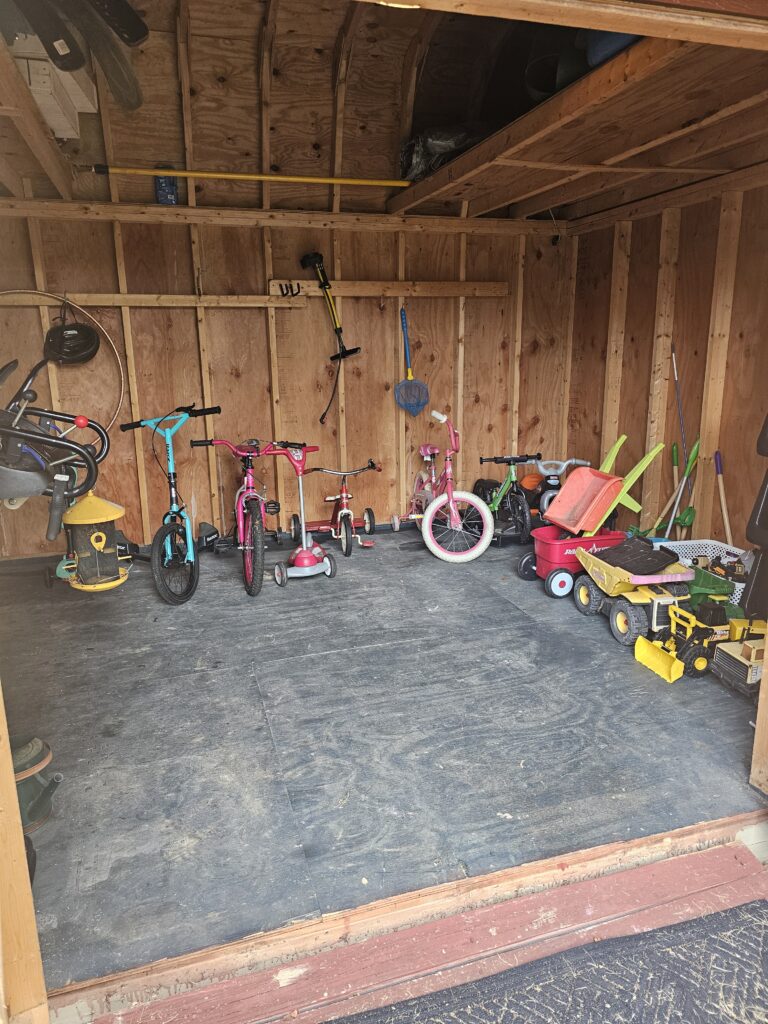
If you hold yourself accountable you can get unpacked in a reasonable amount of time. And as a general rule of thumb if you don’t unpack it and it’s been over a month…. STRONGLY consider whether you even need it. Maybe that parts box is actually your donation box!